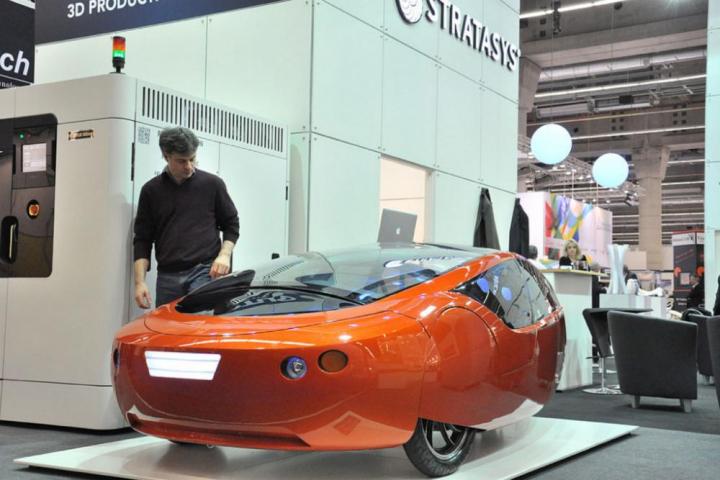
It appears that the days of the wild motoring pioneer aren’t quite done yet, because two brothers are planning on taking their 3D printed car on a journey across the United States that mirrors a 1903 trip by Horatio Nelson Jackson and Sewall K. Crocker. Just to add to the difficulty, they are going with only their dog and ten gallons of ethanol fuel.
That’s right. These wild-eyed eco-nauts think they can get from San Francisco to New York in only 44 hours, a distance of 2,905 miles, using less fuel than it takes most cars to drive just 300 miles.

Tyler and Cody Kor might not be as crazy as you think, though, because their, car the URBEE 2, despite a silly name, boasts some impressive technology.
The shell, interior, and even parts of the frame have been 3D printed out of lightweight plastic. The shape of the car has been specially designed to have an unimaginably low drag coefficient of just 0.15, which is less than you get on some fish.
The URBEE 2 gets its power from a one-cylinder multi-fuel engine capable of burning either diesel or ethanol. The engine doesn’t directly drive the wheels, though. Instead, it charges networked batteries, which in turn feed a 16horsepower electric motor.
16 horsepower isn’t much. In fact, a Bugatti Veyron SuperSport produces roughly that much power for every 57 pounds of its curb weight. But in the light, slippery URBEE 2 this handful of horses is good enough to drive it at just over 70 mph.

Rolling resistance is reduced, because the URBEE 2 is a three-wheeler with a single drive wheel in the rear.
The inside is cramped, with just enough room for two seats and a dog. So I can’t imagine this is going to be a comfortable 44 hours for the Kor boys. Let’s just hope their dog doesn’t get gas.
Despite all the onboard vehicle tech, the journey is still an intimidating task. Automotive giant Volkswagen’s hypermile-ing XL1 was initially reported as getting 260 mpg, but in third party testing managed just 160 mpg. I mention this because VW has the most dour, grey-faced German engineers and spends hundred of millions of Euros on R&D every year and it couldn’t manage what the Kors are setting out to accomplish.
To accomplish the task, the Kors need to maintain an average of 290.5 mpg – 30 more than VW claimed. While VW is funded by global auto sales, the Kors are are funded by Kickstarter.
Despite this, I hope that the Kors succeed. If they do, their names – and Cupid the dog – can go into the pantheon of automotive pioneers along with Nelson and Crocker.


